It can be tough to be a collector of vintage Conway Stewarts. Completists need not apply. With a hundred years worth of history, Conway Stewart is one of the oldest and most prolific pen manufacturers. Over the course of the company’s history, they have delivered a truly dizzying array of pen models, available in numerous sizes and a seemingly unlimited variety of materials, with a focus on marbleized plastics. During the company’s heyday in the 1930s through the 50s, this was especially true. It seems that there were no hard rules, either- virtually any combination of model, color, and size seemed possible. But everything was at least similar. All the pens were imbued with the Conway Stewart family DNA, keeping everything recognizable.
But to try to collect them all- that would be quite an undertaking.
The new Conway is starting to look an awful lot like the company or old.
Conway Stewart celebrated their 100th anniversary in 2005, and they’ve used the special occasion to roll out a significant number of new production pens and LEs. These pens celebrate the rich history of Conway Stewart not just in terms of their designs, which recall Conways of old, but also in the way that the pen families keep growing, with more and more permutations and combinations of models and materials.
In keeping with that theme, the new Nelson is actually a variant of 2005’s Trafalgar LE, which itself takes inspiration from the Conways of the 1930s.
But where the Trafalgar was a limited edition run, the Nelson is Conway’s latest production pen. And while it’s available in six different colors, some familiar and some new, it could be yours in virtually any color you could want. But more on that later...
But Conway Stewart isn’t just looking to the past. There’s something else going on with these latest pens. Starting with a rash of new LEs specific to assorted retailers that were released last summer, Conway has been moving to a more substantial feel for their pens. By inserting a brass liner under the resin barrels and caps they’ve given some of their larger new pens a newfound heft. This answers today’s desires for bigger, more substantial pens. This is despite having the outward appearance of being made from a lightweight marbled plastic. It’s actually a great combination, and worth considering for all those out there who love the looks of brightly colored plastics but would prefer a bit of weight in their hand.
Imagine the Nelson as a Parker Duofold Centennial and you’ll have an approximate idea of the size and shape of the pen, but they also similar in that they are modern updates of a classic design. The form of the Nelson is a classic flattop, except that the top isn’t flat at all- it’s slightly conical, in vintage Conway fashion. The pen is pretty long when capped, coming in at 5 3/4”, yet it is well proportioned. It seems much more slender than it actually is. It’s a very refined and classic shape.
The clip is also classic Conway Stewart, and the cap bands are an interesting twist of the traditional thin/ thick/ thin bands. As a nod to the pen nautical namesake, a wide cap band is surmounted by two thinner bands. This arrangement suggests the rank of Vice Admiral, the position Lord Nelson held during the Battle of Trafalgar. The cap bands are all solid 18k gold, while the rest of the trim is gold plated. The pen is also available as a rollerball, ballpoint, or pencil, all with matching trim and colors.
The Nelson is positioned as the #2 pen in Conway’s hierarchy, just below the Churchill. But in many ways, the Nelson presents a strong case for being the flagship of the line. I’m not just saying that to stay with the admiralty theme. The Nelson asserts itself is through size and its new found heft.
Whether capped, uncapped, or with the cap posted, the Nelson is a longer pen that the Churchill. By virtue of its metal undercarriage, its also heavier than the Churchill. In fact, the only dimension where the Churchill dominates is girth, of both the cap and barrel. It also shares the same large nib as the Churchill. While the Churchill at first would appear to be the bigger pen, set them side by side and it’s a tougher call. Shut your eyes and pick them up, and if you’re a big pen person you’ll pick the Nelson.
The Nelson is available in basic black and five other colors, ranging from classy and classic to bold and vibrant. Two Conway favorites are Classic Green and Bracket Brown. The green is perhaps the most understated color available, a deep, dark mixture of mossy and piney greens with some little speckles of white to provide some contrast. Bracket Brown is a very rich, warm marbling of medium brown tones. Classic Claret is a beautiful chunky marbling of black and burgundy. Since I have Conways in each of those colors, I asked to sample a pair of Nelsons in colors that were new to me.
One of the pens I had a chance to spend some time with used the Flecked Autumn material. This is some interesting plastic, and not for the faint or heart. There’s a muted violet, marbled with deep areas of translucent blood red, slashed throughout with bits of periwinkle. It’s definitely eye-catching, and I’m a fan of eye-catching plastics. But this might be too much even for me!
A new color exclusive to the Nelson is Crimson Whirl, which combines a shimmering deep blue with a swirl of intense red. And it is stunning! The blue component of this resin is particularly interesting, as it’s embedded with a small sparkling element which gives the pen real depth and shimmer.
This is offset with a ribbon of intense scarlet red. It’s another very eye catching material, and during its stay with me, this one elicited a lot of comments.
Of course, if none of these materials really speaks to you, you’re welcome to contact your Conway Stewart dealer to have a bespoke model made for you.
There is an extra fee, but you may find it well worth your while to have a pen that is exactly what you want. And imagine the confusion it will cause Conway collectors 100 years from now. “But I thought the Nelson was only available in six colors. How does this one fit in? Maybe another LE? A prototype?” Just imagine the fun.
But as sharp as the Nelson is to see, it’s even better to use, especially if you prefer a bigger pen. It’s a little disconcerting to hold at first. You just don’t expect the heft. The pen has all the weight of a metal pen (and a fairly heavy one a that) but has the soft, warm feel of a resin pen. It’s very well balanced and plenty big. At 5 3/8” without the cap posted, the pen is as big as a Pelikan 1000. Posted, the pen is a whopping 7” long. I usually post the cap when writing, but I found the Nelson to be very comfortable and well balanced whether capped or posted. In fact, it’s one of the only pens I can think of that’s comfortable for me to use when uncapped.
The barrel’s width is very comparable to the Duofold Centennial or Pelikan 1000. Thick enough to be comfortable, but not so thick as to force an unusual grip. The section is gently curved and makes a comfortable grip for extended periods of writing. With the cap posted, I found myself holding the pen a little bit above the section, just because I had so much room to spread out.
The Nelson uses Conway’s standard large nib, which is both smooth and blessed with excellent ink flow. It’s also available in a wide assortment of sizes, from EF to BB, with italics in fine, medium, and broad. I’ve had a lot of personal experience with the medium and broad nibs, as well as all the italics, so I decided to sample a couple of other nibs. I tried a fine and a double broad. The double broad was right up my alley, super smooth and with very wet ink flow. There was not a lot of variation to the line, as you would expect from the broader German nibs. The Conway’s tip is more rounded, and less of a chisel tip. However, it’s great for big, bold signatures or even for highlighting. The fine nib was also very smooth, something I don’t often say when it comes to fine nibs. It wasn’t super fine, though, maybe closer to a medium in line weight. It also had very rich ink flow, so for people who prefer a very fine nib, the EF nib might be a good option.
The built in piston filling mechanism worked smoothly in both pens, unlike a very early model 100 I have which can be a bit balky. If you don’t want the piston filler, a cartridge/converter variant is also available. The built in piston held plenty of ink, certainly enough to keep up with the incredible flow of ink from the double broad nib.
The Nelson fountain pen retails for $575. At first glance it seems a bit pricey. All Conway Stewarts witnessed a spring price hike, thanks to the weakened US Dollar. In fact, the Nelson is still about two bottles of ink less expensive than the Churchill, a pen it bests in many respects.
Looking at other flagships, the Nelson is very competitive with the MB 149 and Pelikan M1000, and undercuts the large sized Dupont Orpheo. So while I wouldn’t go so far as to say it represents an incredible value, it’s a lot of pen for the money.
And unlike the 149 (black, anyone?) or M1000 (black or green stripe?), you can actually have a choice. You can order your Nelson in classic black, an assortment of five beautiful and striking marbled plastics, or for an additional fee, any of the three or four hundred plastics Conway Stewart uses for their assorted models. Throw in the choice between piston or cartridge, the assortment of modes available, and you’re sure to be able to come up with something to stymie Conway collectors for years to come.
ARCHIVE
Conway Stewart Nelson Resin, 2006
By Doug Vicary
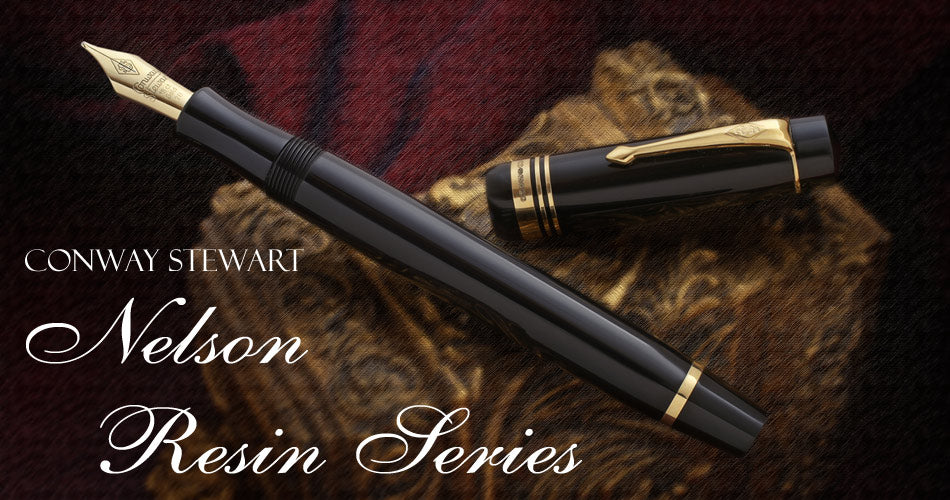
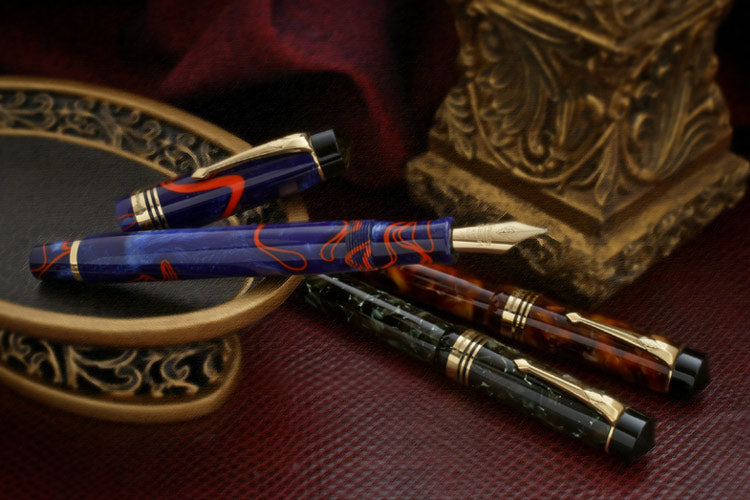
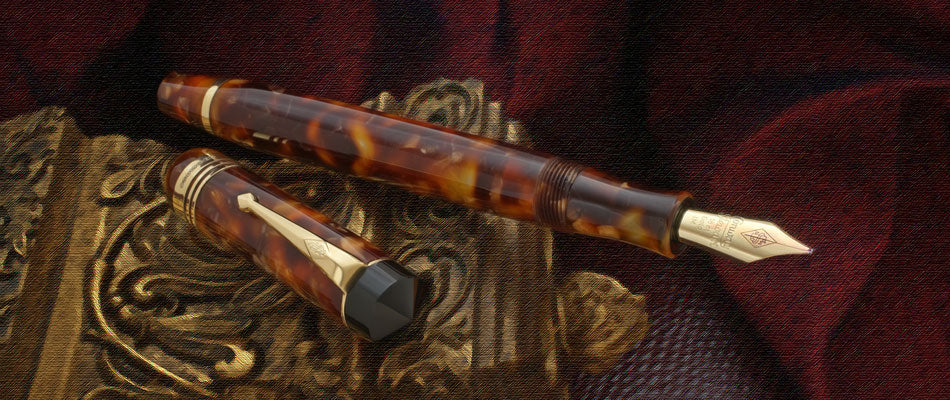

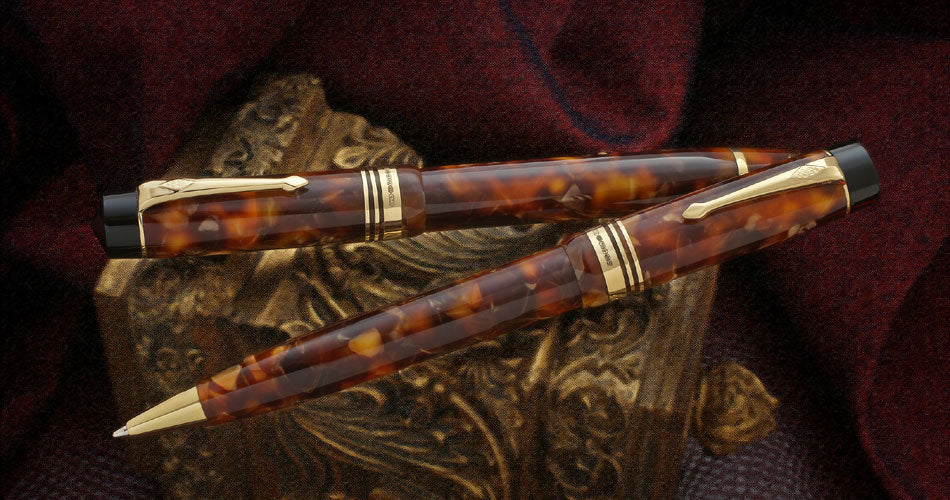
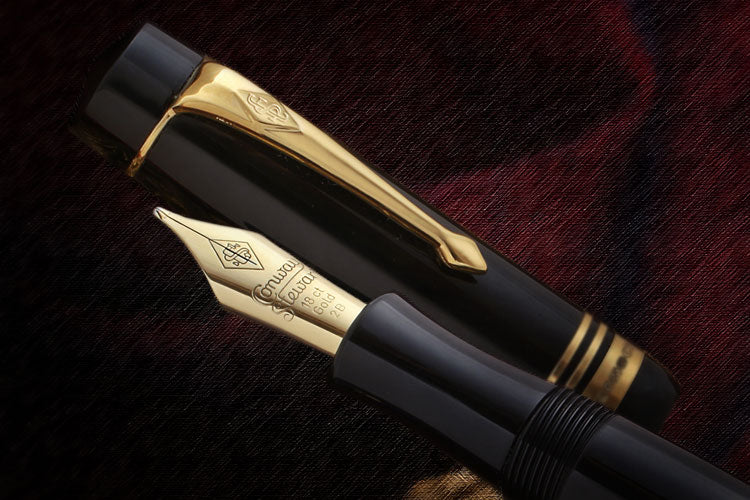
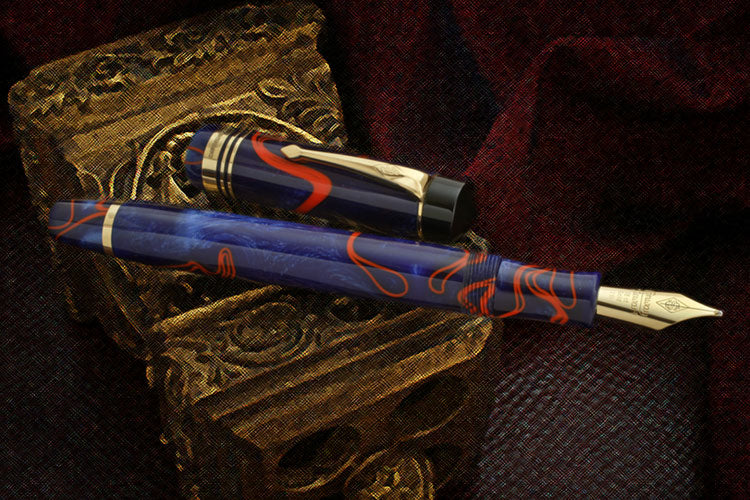
Archive Blog Posts
WES Journal edition #126, Winter 2023
Spotlight on Conway Stewart Originally published in WES Journal 126, pp 26-29, 2023
The History of Conway Stewart
The Beginning In 1905, Mr. Frank Jarvis and Mr. Tommy Garner formed Conway Stewart & Co. Limited at 13 Paternoster Row LondonEC1, next to St Paul’s Cathedral in London. Today,...
Conway Stewart 'Babbage'
Charles Babbage is popularly known as the “Father of Computing” for his pioneering work with computing machines. The use of Jacquard punch cards, chains and subassemblies, and the logical structure...
Conway Stewart Evergreen Sterling Silver Duro Special Edition
SOLD OUT! Retail List Price Fountain Pen or Roller Ball — £599 $970 €630 Welcome to our February 2010 Special Edition — the Conway Stewart Evergreen. Based on our popular Sterling Silver Duro model,...
The Balmoral
Following the success of our Windsor, which was inspired by the ornate decoration gracing the creations of English gunsmiths, Conway Stewart is pleased to announce the second in this prestigious...
Conway Stewart Cavendish Edition
Conway Stewart is proud to announce our new model in English hallmarked solid sterling silver, the Cavendish. A bold stylish design that brings together a traditional shape with a crisp...
Conway Stewart 'Elizabeth Garrett Anderson' Limited Edition
Elizabeth Garrett Anderson is regarded as England’s first female doctor; a pioneer in educating women in medicine; a strong supporter of women’s suffrage and opportunities in higher education, as well...
The Wellington Series
Arthur Wesley was born in Dublin in 1769. In 1798, his aristocratic Anglo-Irish family changed their name to Wellesley. In honour of Sir Arthur Wellesley, Conway Stewart commemorates the Duke...
Professional Series - Doctor's & Lawyer's Edition
The new Conway Stewart Professional Series is designed to reflect the dedication and life’s work of individual professional fields. These striking new designs are crafted of gleaming black resin and...
Kipling 'IF' Special Edition
The new Special Edition from Conway Stewart is inspired by one of the most important literary figures in English history. At first glance this pen looks like it has a...
Conway Stewart Belliver Series
The new Belliver model from Conway Stewart is a return to the finest traditions of CS heritage, rooted in attention to detail, a perfect size and weight, as well as...
Conway Stewart Montague and Capulet Series II
The 2013 Montague and Capulet series from Conway Stewart celebrates the principal characters of Shakespeare’s eternal classic Romeo and Juliet, bringing a graceful and elegant slim design to life in...
Excalibur Limited Edition
Conway Stewart is pleased to announce the latest new colour on the popular Churchill model — Excalibur with hallmarked solid sterling silver trim. The Churchill Excalibur hand made resin consists of a...
Conway Stewart Edwardian Limited Edition
Conway Stewart is proud to present our new limited edition sterling silver series, ‘The Edwardian’. Based on our popular Belgravia model, the Edwardian is completely crafted from solid sterling silver...
Conway Stewart Gatsby Limited Edition
“Nominee in the 2014 Pen World Reader’s Choice Awards — Best Cultural or Historical Theme” During the classic era of the 1920s, a fine fountain pen was considered not just a luxury,...
60th Anniversary 100 Series Special Edition - Pistachio
60th Anniversary Celebration! The 100 Series was first launched in 1954 and was quick to become one of the most popular Oversize pens ever made by Conway Stewart. In celebration...
Marlborough Vintage Limited Edition Pens
The Conway Stewart Marlborough Vintage Limited Edition is a distinguished new design, that is inspired by the classic styling of our vintage models and created with our present day manufacturing...
Jaguar Limited Edition
The Conway Stewart Jaguar is a new finish to compliment our sold out Elegance Aztec limited edition. Each pen from the Elegance range has a unique design and is produced...
Conway Stewart Collectors Club - Celebration Pen & Book Special
Offered only to members of our Collectors Club, Conway Stewart is making available the Celebration pens accompanied by a hardback copy of the new book, Fountain Pens for the Million — The...
Conway Stewart Collectors Club - Churchill Carbon Fibre
Conway Stewart is making available exclusively to members of the Collectors Club our award-winning Churchill model with hand wrapped Carbon Fibre overlay covering the cap and barrel. Each pen is...


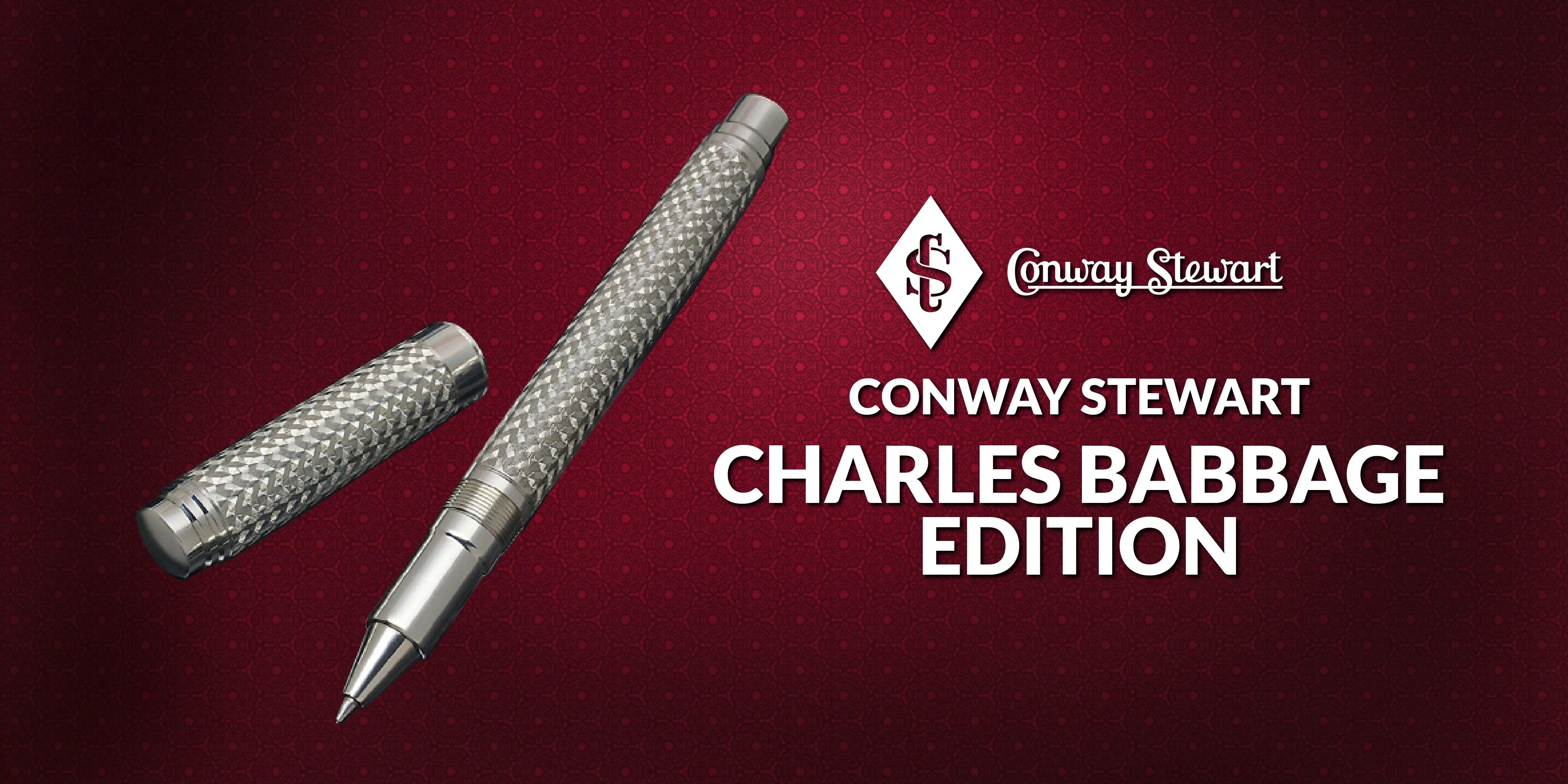
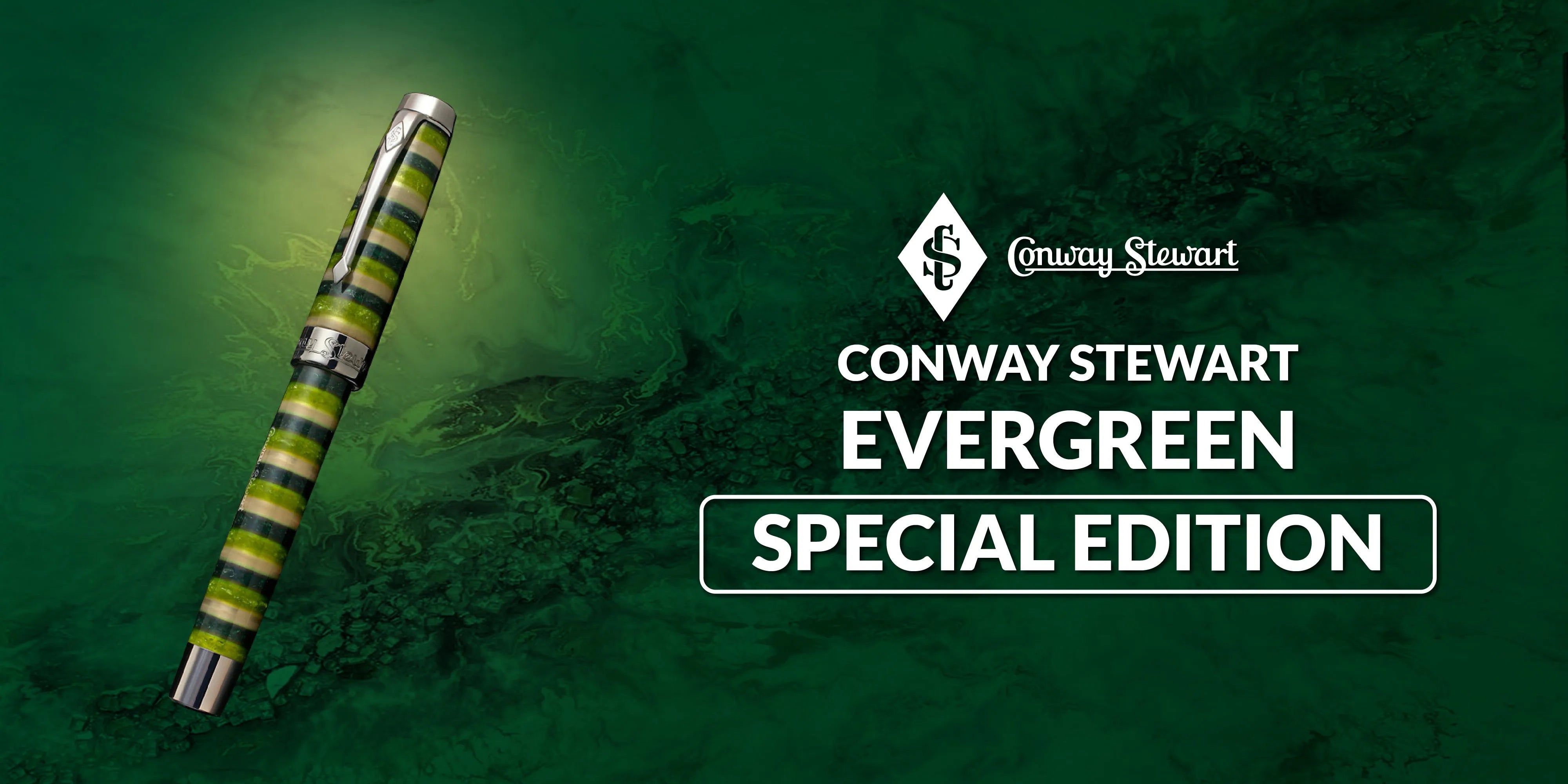

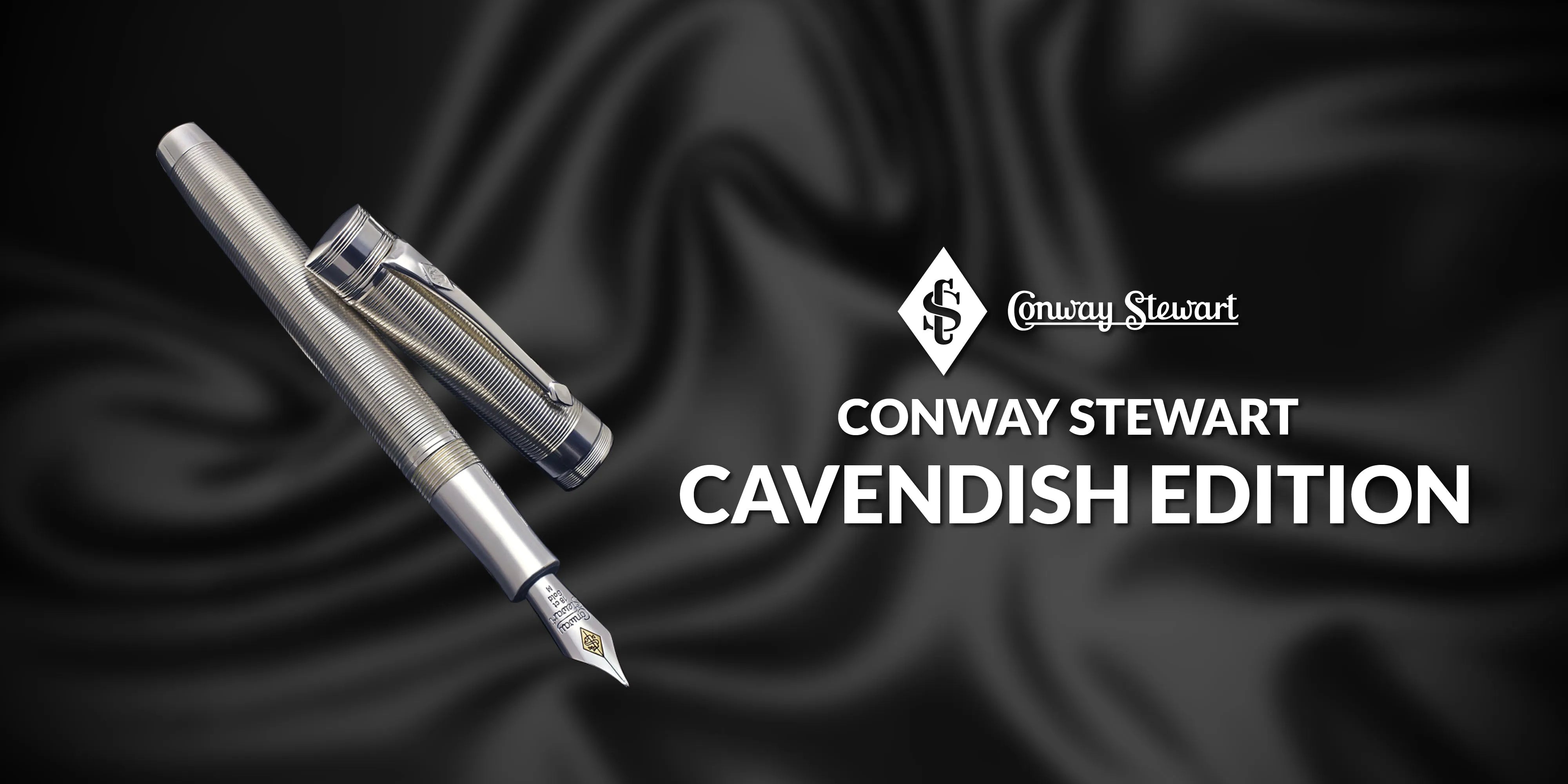
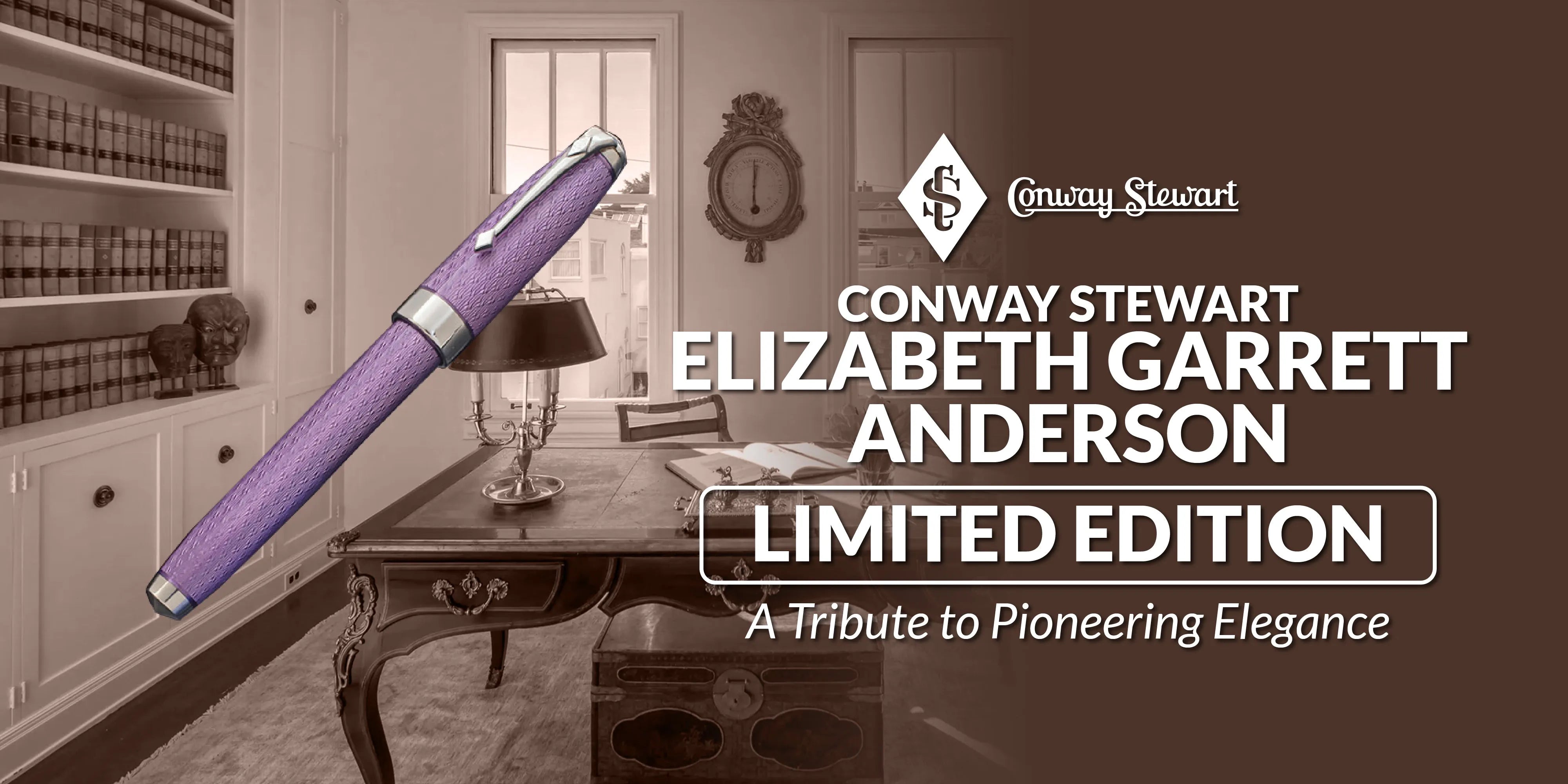

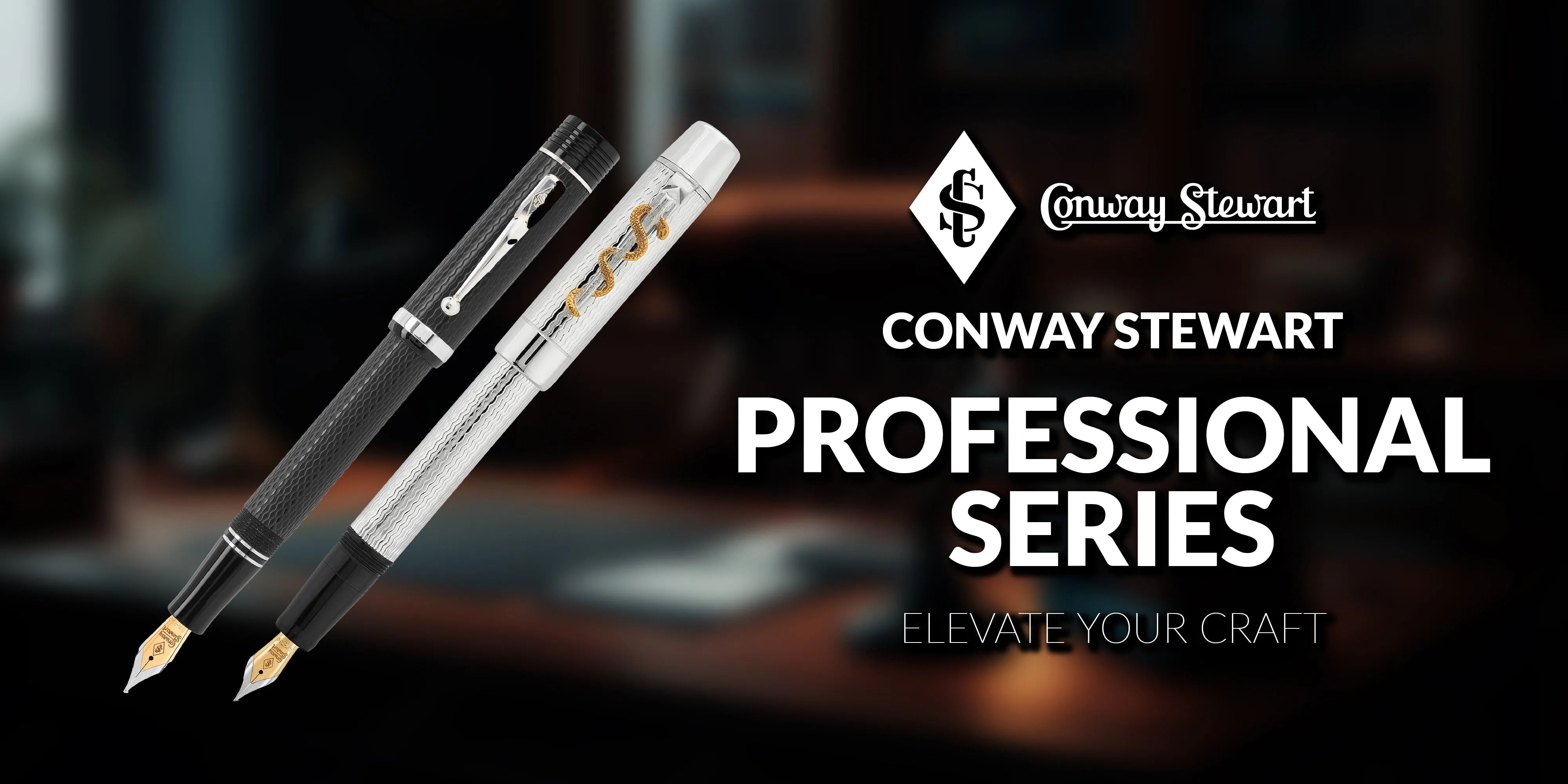
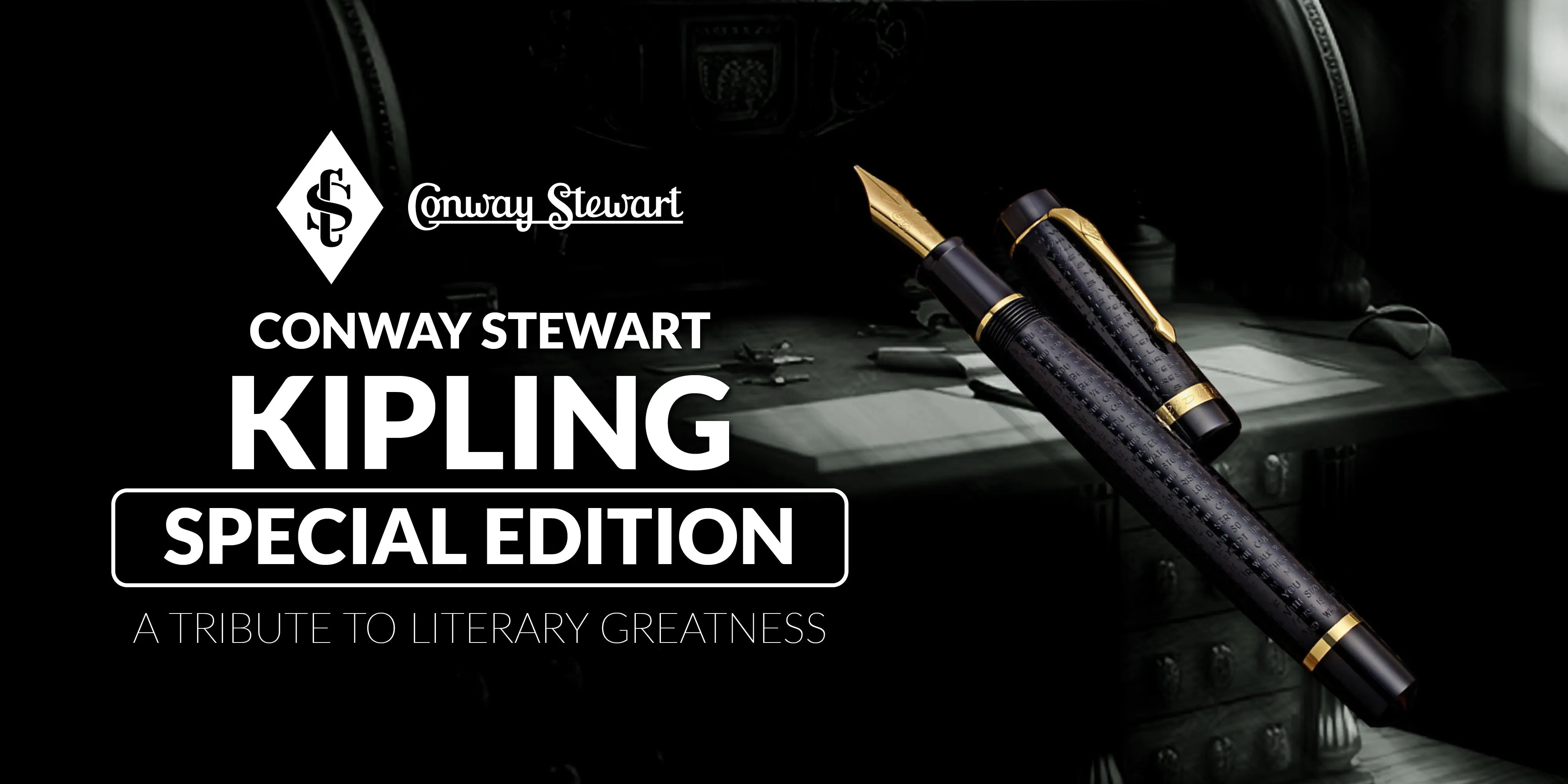

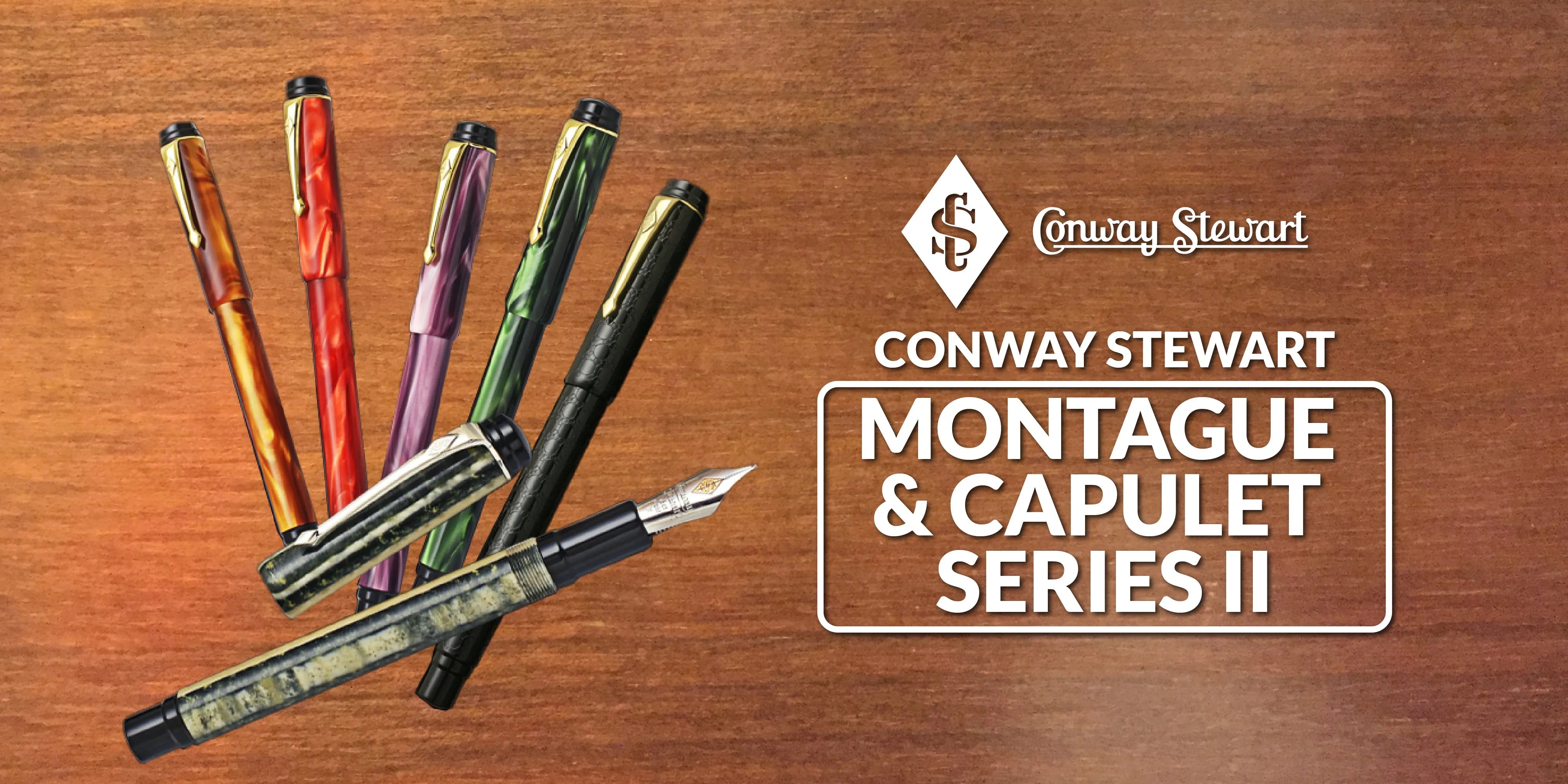
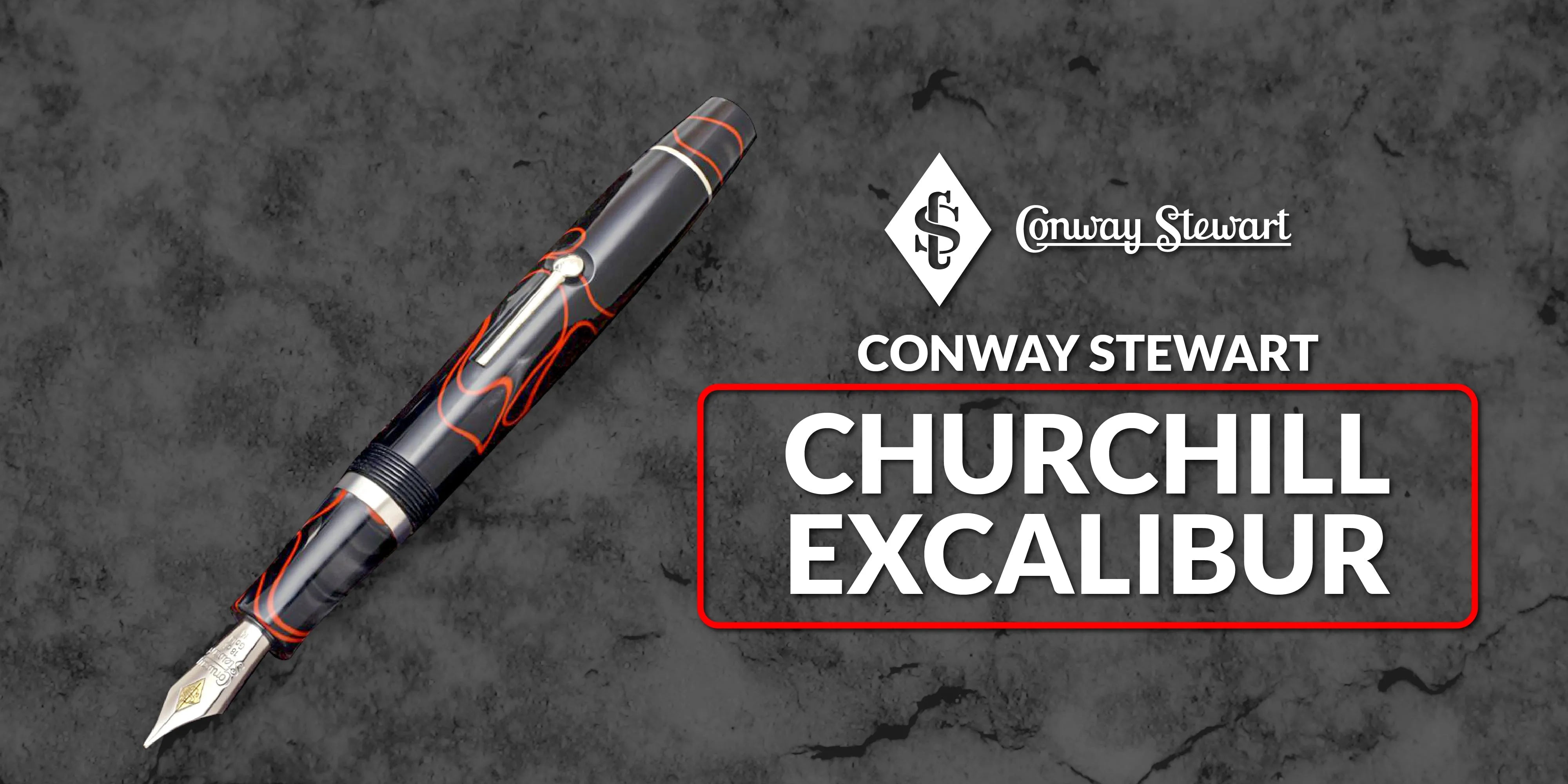
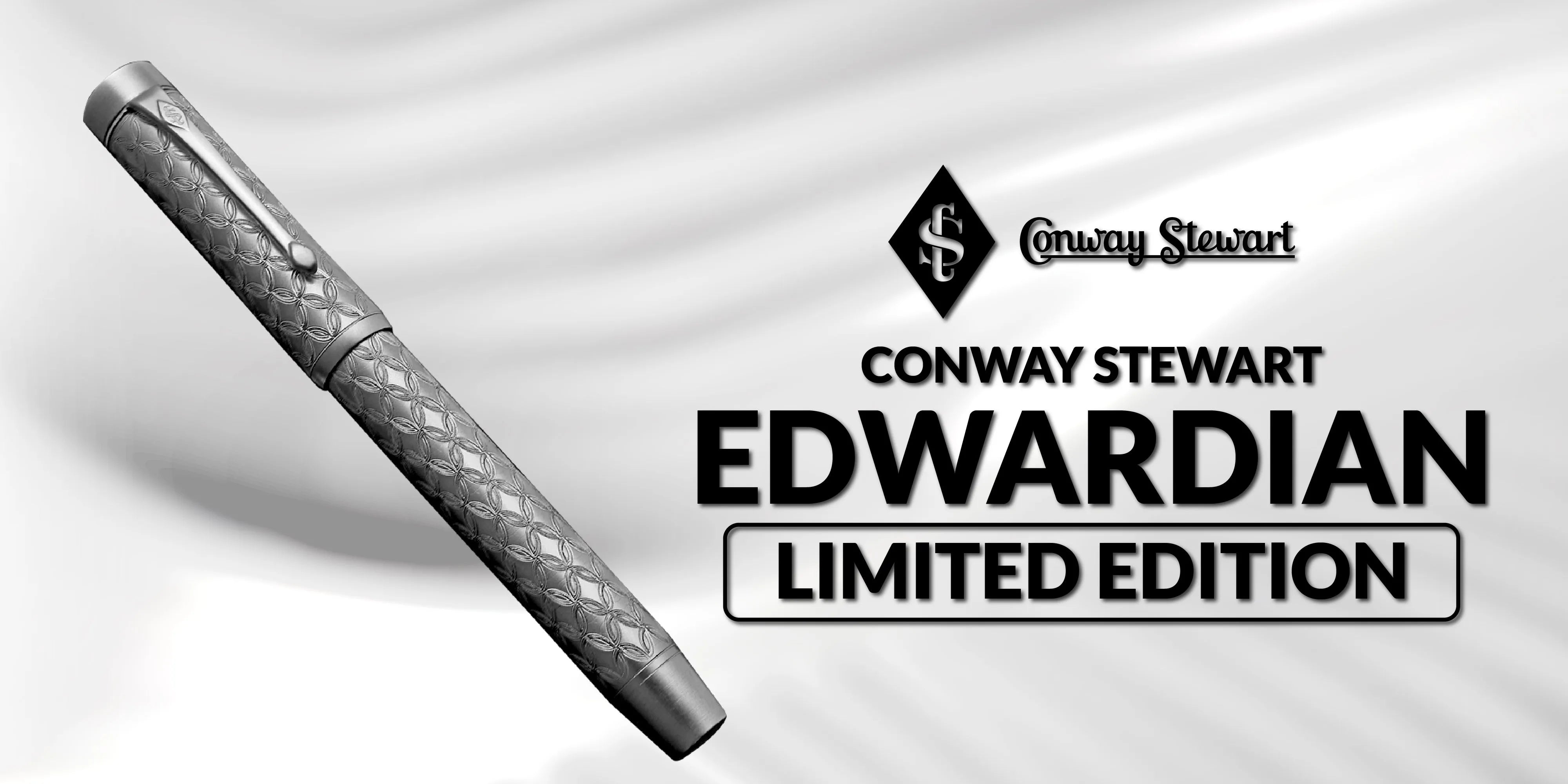

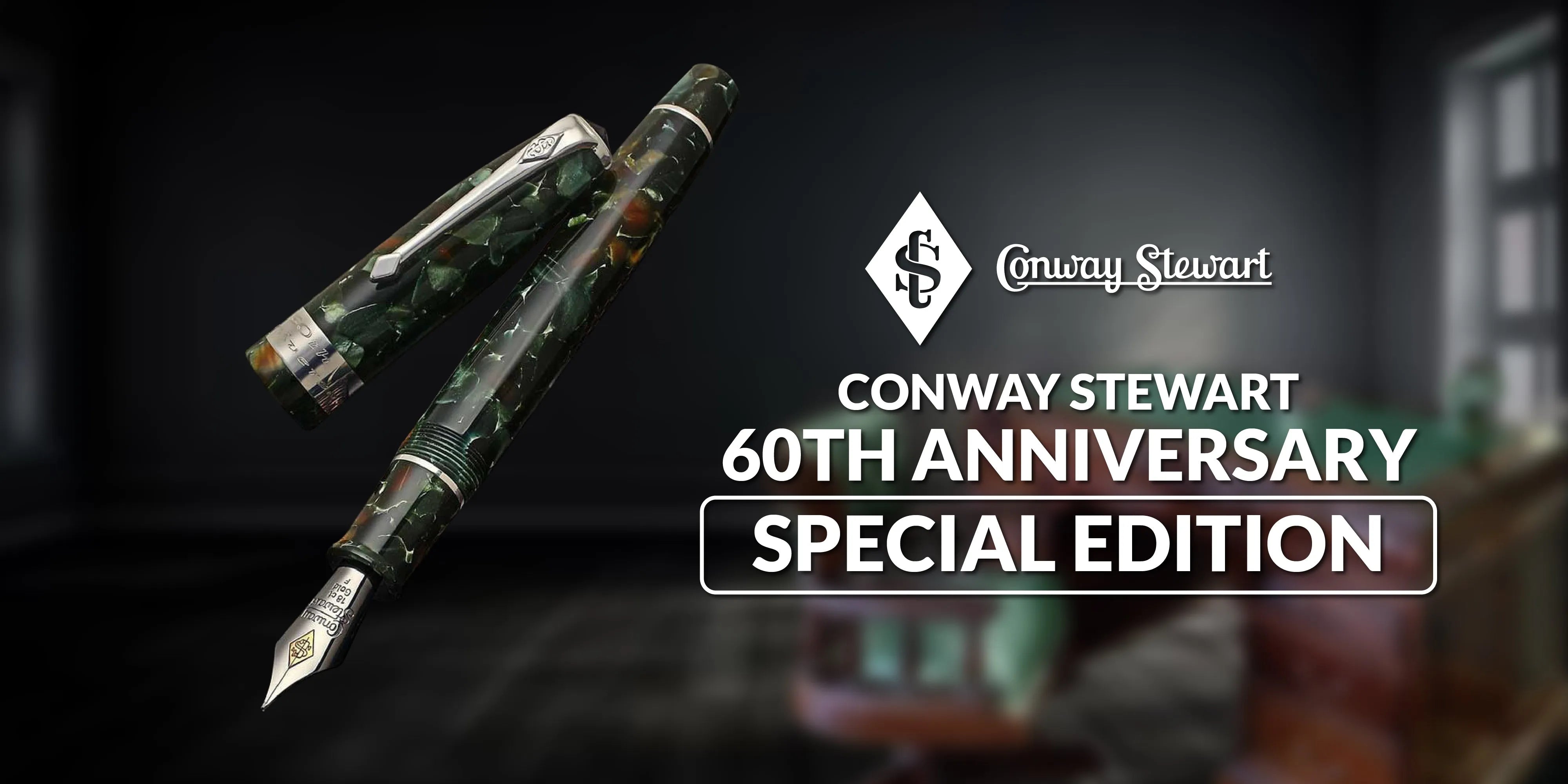
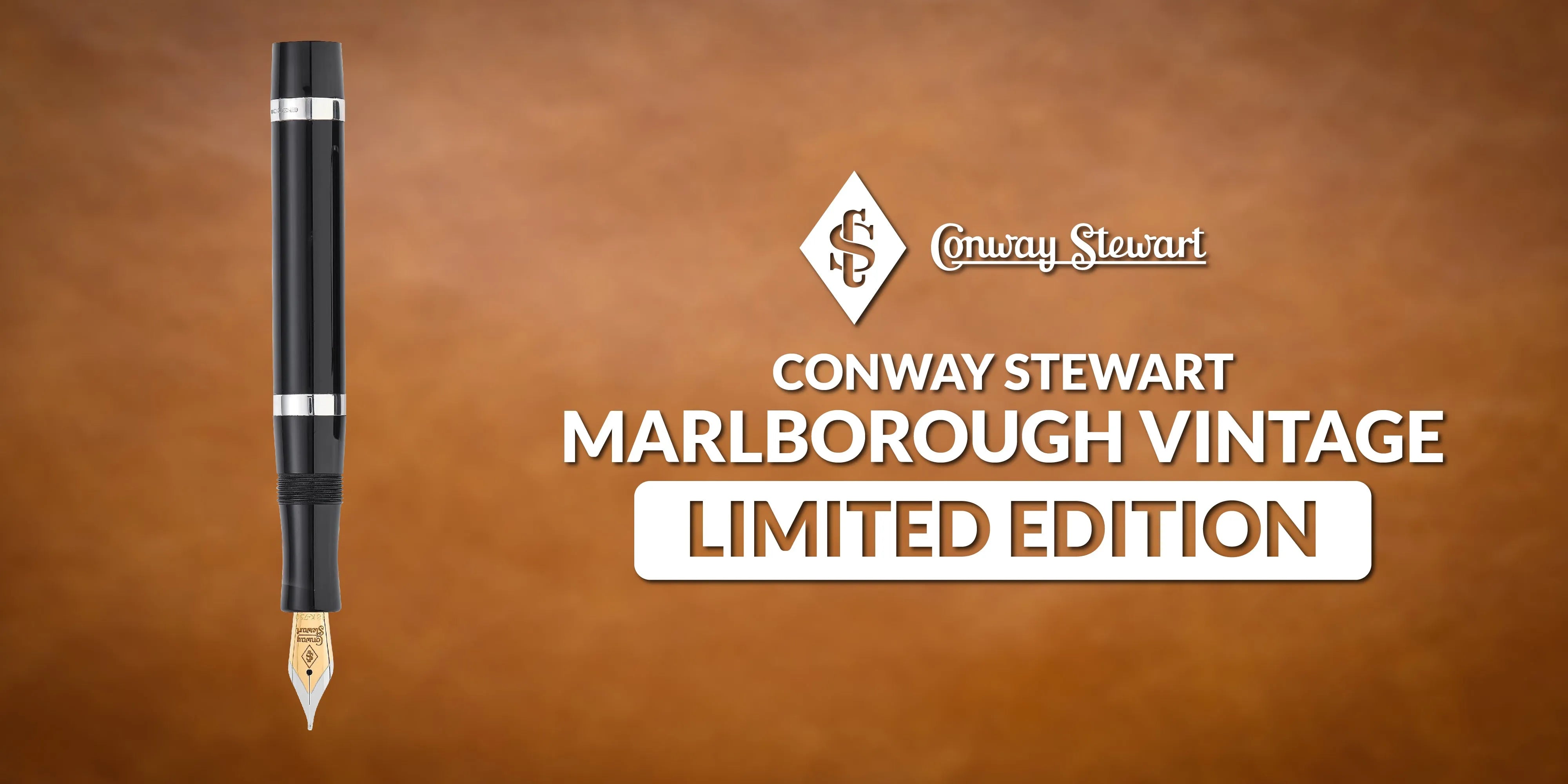

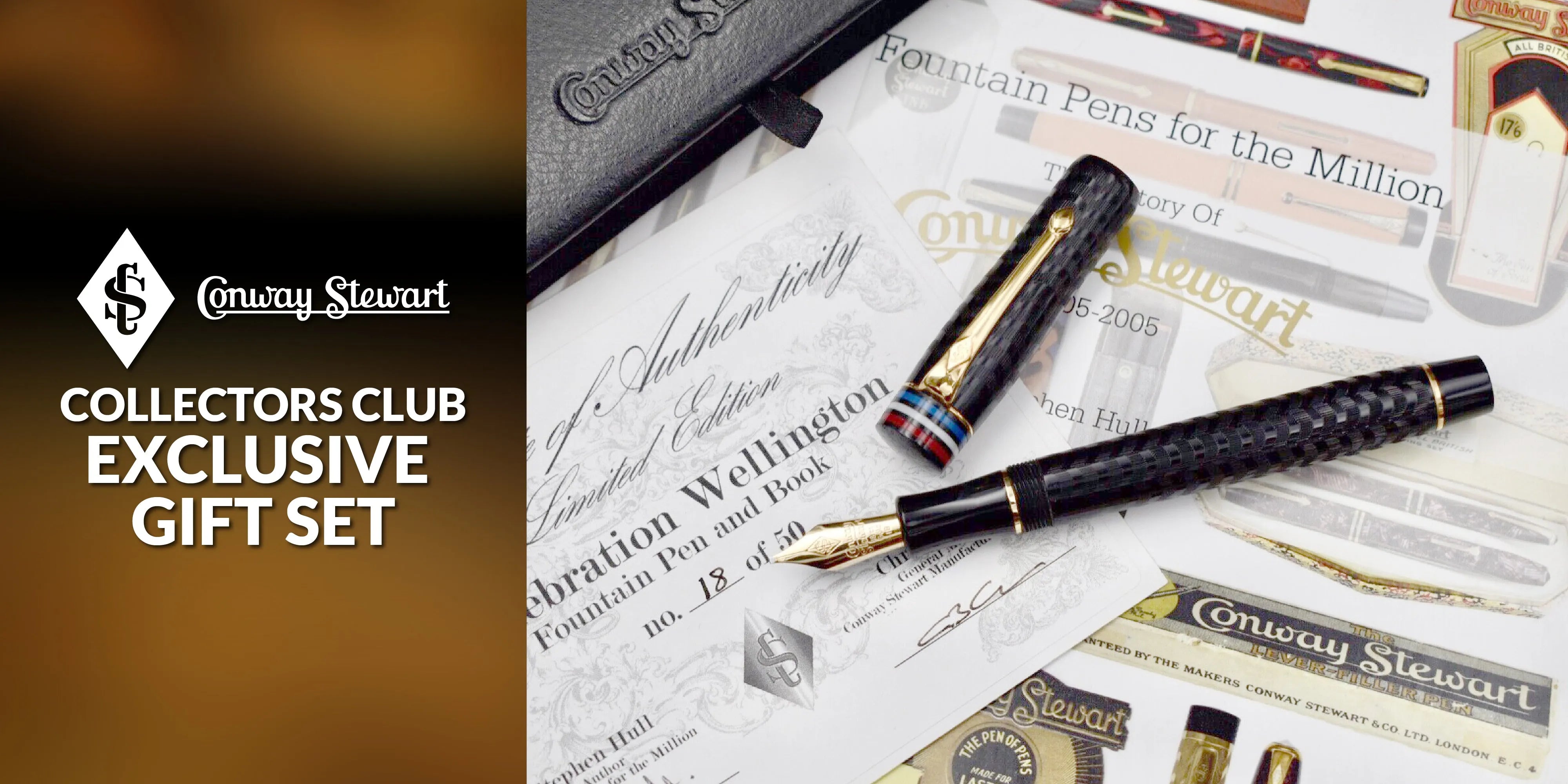
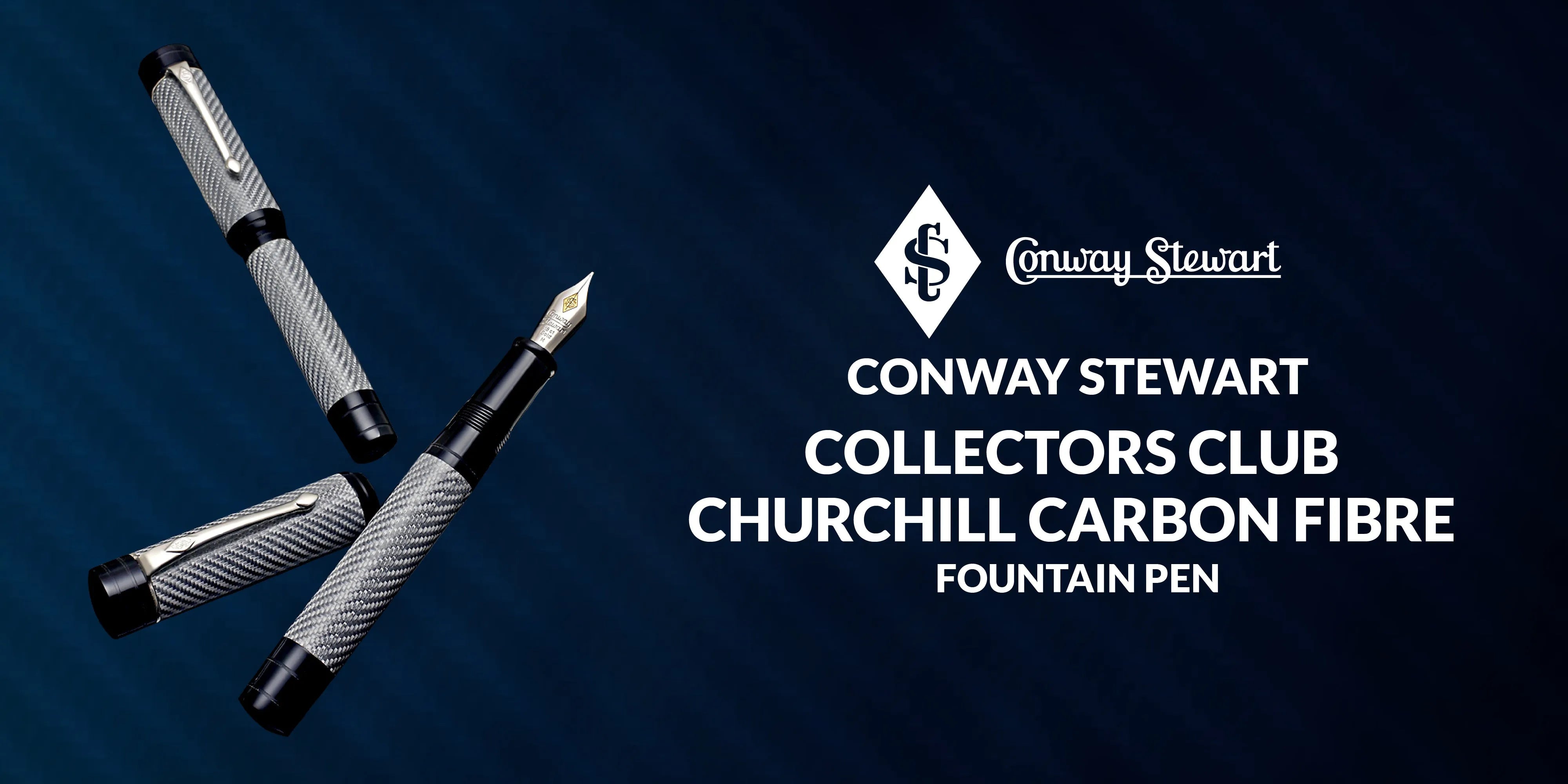
Leave a comment